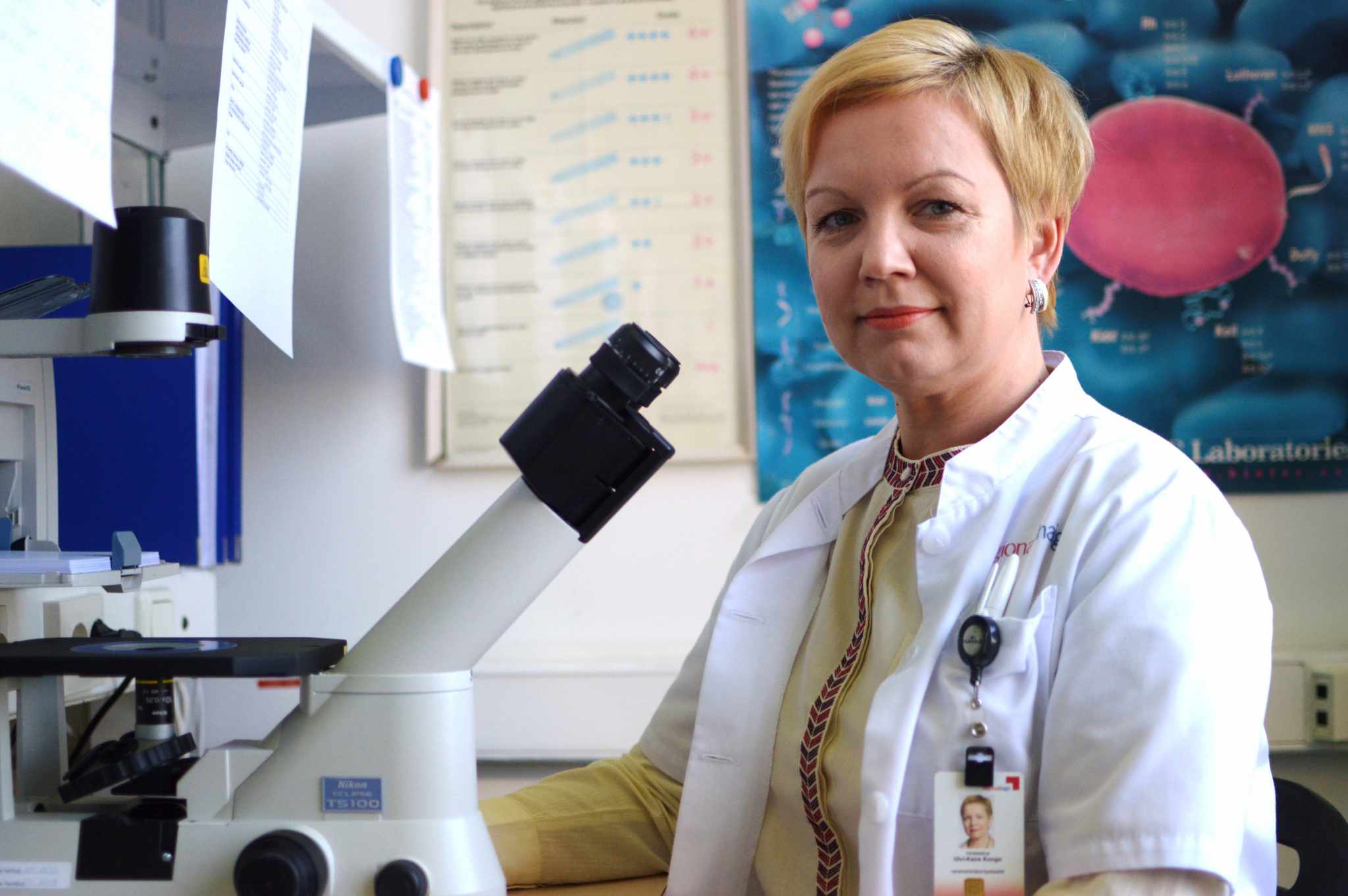25 years of accurate research on blood group matching in Estonia

Dr Ulvi-Kaire Kongo
The Blood Centre will host a seminar at the Mustamäe unit of the Medical Centre on Friday, 8 December at 11 a.m. called “25 Years of the Immunohaematology Reference Lab”. The seminar will reflect on the past and analyse the challenges faced today.
The immunohaematology reference lab was established on 4 December 1992 with the directive of the Minister of Health pursuant to the need to raise the level of immunohaematological research in Estonia and to ensure studies comparable to the rest of the world. Dr. Riin Kullaste, Director of the Blood Centre, is glad that today we have almost reached our original goal: “The reference lab has become a competence centre, and we have caught up with the best of the world in terms of the principle research opportunities of blood groups. The lab provides directions and instructions to other labs in the field as well as the blood banks in Estonian hospitals.” Kullaste further emphasised: “Over the last 10 years we have participated in international comparative testing every month and Estonia has always scored maximum results.”
Dr. Ulvi-Kaire Kongo has been head of the immunohaematology reference lab since 1999. According to her, knowledge on blood groups has come a long way since then and today there are significantly fewer adverse side effects to blood transfusions. Dr. Kongo explains: “During the early days of the lab, there were 25 qualified blood group systems according to international classification, but today the same classification includes 36 thoroughly described blood group systems, so we have much better means for carrying out studies. For high-precision studies on blood groups that are rare or missing from our population, we can turn to other larger reference labs in Europe.”
Immunohaematology reference labs are focussed on studies related to blood groups from donors as well as patients, and these specialised labs are usually located close to the largest supply of donated blood in a given country, i.e. the blood centres. Donated blood required thorough examination for a number of blood groups in order to have an overview of the donor profile in the country and to be prepared for the need to find matching blood for all patients in a timely manner. Patients for whom it is difficult to find matching blood based on standard studies performed at hospitals and in whose case it is necessary to consider a range of other blood groups in addition to the usual AB0 and RH groups are also subjected to reference studies. Dr. Kongo explains: “Reference studies are used to identify antibodies and search for donors without the corresponding antigen – the goal is to ensure the maximum safety and efficiency of the transfused blood. It also serves to find matching blood for patients with rare blood types who might only be able to receive donated blood from 0.2% of the population.”
This year, we have helped 1,927 patents who have been subject to 13,748 studies altogether.
In addition to matching studies, the reference lab studies pregnant women with antibodies in order to determine any risks for haemolytic disease for the foetus and newborn baby.
Classical serological methods and modifications thereto have been used to perform studies for more than 100 years ever since blood groups were first discovered. By now we have reached the stage where for the past few years we have been able to use molecular diagnostics to study blood groups. According to Dr. Kongo, this new research enables a person’s blood group pattern to be determined on the basis of his or her genotype, and that information can be used to select the closest and most suitable donor blood for the patient’s blood transfer. Upon analysing DNA extracted from the blood sample, it is possible to identify 35 different markers of the blood group system. It enables antigens to be identified with the highest potential risk for causing autoimmune diseases.
Dr. Kongo has written a hospital blog post about matching different blood types and the interesting, almost detective-like research in finding the right blood Milline veri on kõige harudlasem (What is the rarest type of blood?)